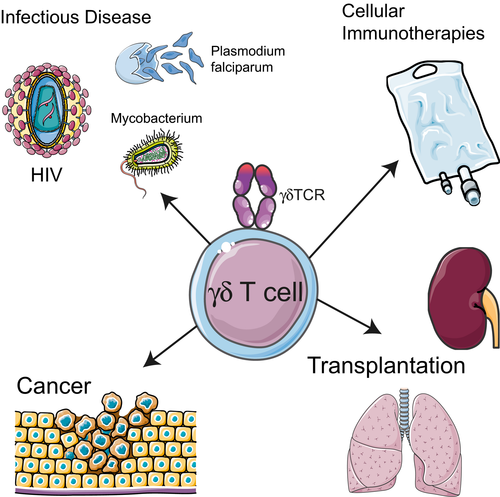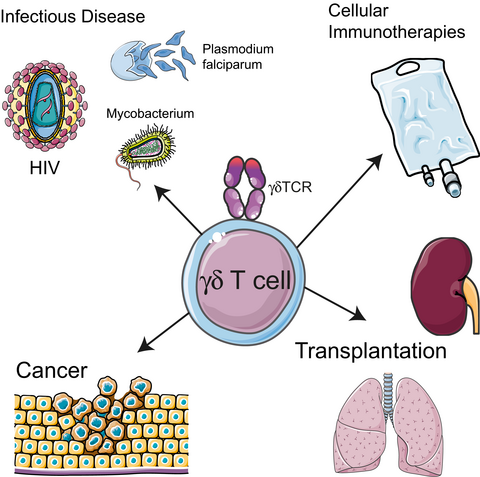γδ T cells take the stage
Despite the discovery of the γδ T-cell receptor (TCR) over 30 years ago, the exact role of γδ T cells in infectious disease, cancer and transplant immunology remains unclear. Nevertheless, γδ T cells are frequently implicated in both anti-microbial and anti-tumor immunity.1 γδ T cells are formed of innate-like and adaptive populations, that recognise target cells in a major histocompatibility complex (MHC)-independent fashion, consistent with a lack of surface CD4/CD8αβ co-receptor expression. Studies in mice have highlighted ‘innate-like’ γδ T cells subsets emerging early in thymic development, bearing semi-invariant TCRs,1, 2 suggestive of a limited range of self-ligands. Recent studies in humans have also identified that a major human γδ T-cell population, constituting the largest subset of γδ T cells at tissue locations, follow an adaptive immunobiology.3-5 In this Special Feature of Clinical & Translational Immunology, we have invited experts in γδ T-cell biology to provide an overview of the emerging roles of this often overlooked and unique population of T cells in health and disease (Figure 1).

Siegers et al.6 provide a memorial article in commemoration of the late Professor Paul Fisch (1959–2018). Paul was a pioneer of γδ T-cell research where he made a profound contribution to our understanding of γδ T cells. Paul was one of the first to describe the unique responses of γδ T cells in infection and cancer, and provided evidence suggesting γδ T-cell recognition events were independent of MHC molecules.
Dantzler et al.7 provide an overview of γδ T-cell responses in infectious diseases of global health importance, such as tuberculosis, malaria and influenza. This review highlights several recent studies investigating γδ T-cell responses to vaccines targeting these infections.
Juno et al.8 highlight the impact of acute, chronic untreated and treated HIV infection on peripheral γδ T-cell subsets and discuss new insight into the potential for harnessing γδ T cells as components of an anti-HIV immunotherapy.
Raverdeau et al.9 highlight the exciting new avenues for harnessing γδ T cells in anti-cancer immunotherapies but also underscore evidence for the pro-tumor properties of γδ T cells.
Sullivan et al.10 review the evidence for γδ T cells in solid organ and haematopoietic stem cell transplantation. The authors focus on their potential roles in allograft acceptance and rejection, as well as their impact on transplant-associated infection and post-transplant malignancy.
Together, this collection of reviews highlights current paradigms in γδ T-cell biology in health and disease. Each article then places γδ T cells in scenarios of infection and immunity – albeit ‘good, the bad and sometimes confusing’ – further emphasising the critical importance of developing a better understanding of this unconventional T-cell population.
Conflict of Interest
The authors declare no conflict of interest.





